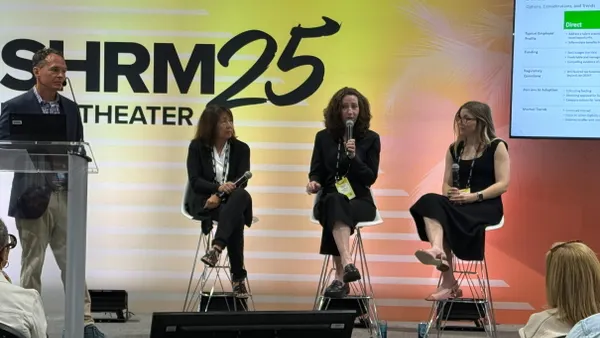Dive Brief:
- The typical summer vacation including mom, dad and the kids piling into the car and heading for a new location hasn’t changed, the AP reports. About 50% of U.S. workers plan a total break from work, according to an online study by the University of Chicago.
- Although most workers plan on having some rest and relaxation while vacationing, 30% will stay plugged into social media while they’re away, and 40% of both full- and part-time workers plan to work during their vacation or at least check in with the office.
- The survey also found that 43% of American workers said they don’t take a vacation because they can’t afford it; 50% of workers plan to spend less than $1,000 for their summer vacation, while the other half anticipates spending more; and two-thirds of workers would prefer a less fancy but longer vacation, if they had a choice.
Dive Insights:
More time away from work for family and personal interests is what workers in a recent study say they want most. Yet many stay connected to the office even while they’re away from it, either during after-hours or while on vacation — meaning burnout is a real risk.
Employers can help minimize the adverse effects of burnout, such as high absenteeism, chronic tardiness, health problems and lower productivity by making vacation semi-mandatory and discouraging employees from emailing, texting and using other office communication during non-working hours. Employees should encourage one another to take the time off that they need, and management can serve as a strong example by taking time when they need it as well.
In all, encouraging employees to take the time they are due ensures a more productive and engaged workforce. Employees that return fully refreshed from vacation could kickstart innovation upon their return — certainly a positive gain overall.











